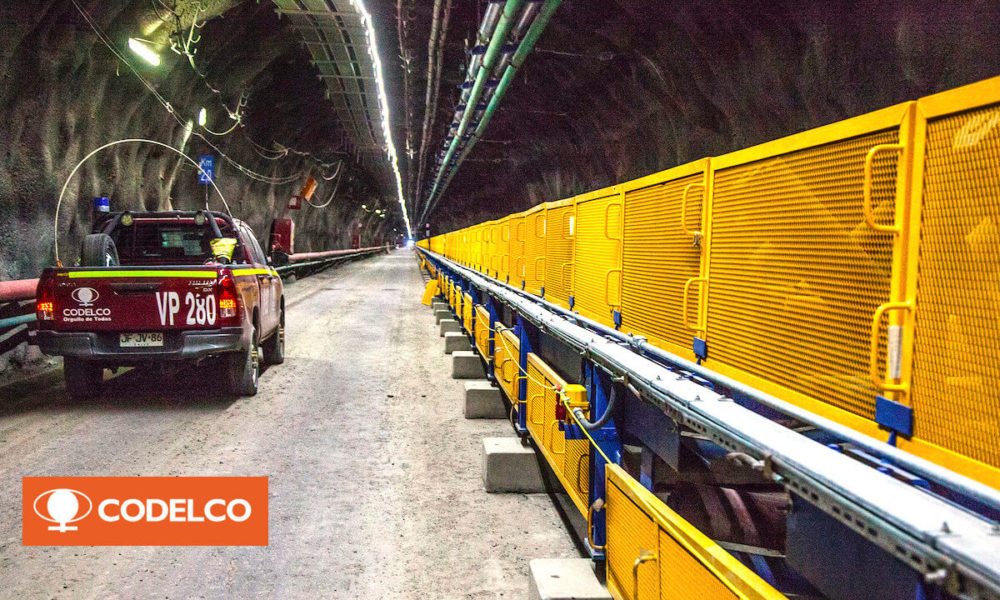The Strait of Hormuz is a narrow waterway just 21 miles wide that comnects the Persian Gulf to the Gulf of Oman and the Arabian Sea beyond. It is bordered to the north by Iran and to the south by Oman. If you look at a world map, you will see that almost all of the countries that border the Persian Gulf are petrostates — Iran, Iraq, Kuwait, Saudi Arabia, Bahrain, Qatar, Dubai, and the United Arab Emirates. According to the New York Times, 20% of all the world’s oil and methane energy travels from the Persian Gulf to world energy markets through the Strait of Hormuz.
A strait is defined as a body of water that connects two water basins that usually lies between two land masses, according to Wikipedia. Detroit, Michigan, is located on the strait that connects Lake Huron and Lake Erie. In French, d’étroit refers to a place near such a narrow channel.
Dire Strait
Marine traffic through the Strait of Hormuz is controlled by the Traffic Separation Scheme mandated by the International Maritime Organization. According to OilPrice.com, in order to keep supertankers from bumping into each other, the TSS specifies that ships use travel lanes two miles wide — one for inbound and one for outbound traffic. In addition, there is a separation zone between the two travel lanes that is also 2 miles wide.
Now here’s why all this matters. These designated shipping channels lie entirely within the territorial waters of either Iran or Oman. So when a country far away from Iran starts dropping 30,000 lb bombs on it, Iran, in turn, has the ability to disrupt the stream of tankers traveling into and out of the Persian Gulf.
OilPrice.com says it is hard to overstate the importance of the Strait of Hormuz. which is calls “the world’s foremost energy chokepoint. The temporary or indefinite blockage of such a route can lead to substantial disruptions in global energy supplies and a sharp increase in energy costs.” Some of those costs go to insurance premiums. No company is going to operate a vessel that costs half a billion dollars carrying a cargo worth another half billion dollars without insurance.
You don’t need battleships the size of the Graf Spee to sink a tanker or two. All you need is the threat of military action and the insurance companies will notify their policy holders their coverage is suspended if they venture anywhere near the Strait of Hormuz.
Iran Depends On Strait Of Hormuz
Closing the Strait of Hormuz is not an option for Iran, as most of its income is derived from selling its own oil on the world market — oil that has to move on ships loaded at the western end of the Persian Gulf that then go through the Strait. But it doesn’t need battleships to interrupt marine traffic. There are reports that Iran is interfering with the GPS systems ships use to pinpoint their position at sea. Earlier this month, GPS attacks were affecting some 1,000 vessels a day, according to Windward, a maritime analytics firm. Two oil tankers collided last week near the Strait of Hormuz, which the United Arab Emirates blamed on navigational errors. Bad GPS data could well be the reason for those navigational errors.
In addition, the Iranian navy has developed a large fleet of small, fast, and heavily armed speedboats, anti-ship missiles, naval mines, and drones to counter the naval superiority of larger powers like the US. Some may notice how similar this force is to the tactics used by pirates elsewhere in the region. Asymmetric military force is the term used in polite society, but it is just another name for guerrilla warfare.
“The primary destinations for these energy exports are the rapidly growing economies of Asia, including China, Japan, India, and South Korea. Consequently, any instability in the Strait of Hormuz sends immediate shockwaves not just through global oil markets, but directly to the industrial and economic heartlands of Asia and beyond,” according to OilPrice.com.
People in the US have trained themselves to ignore anything happening elsewhere in the world. That will come to an abrupt end when those distant countries go looking for alternate energy supplies, which will drive up the costs for everyone — yes, Virginia, even Americans. It’s a big, beautiful world and everything is connected to everything else. Astonishing, but true!
“The world can’t do without that energy supply,” Clayton Seigle, a senior fellow at the Center for Strategic and International Studies, told the New York Times. “A cutoff would be an unprecedented, severe blow to the global economy.”
Renewables Beat A Full Strait
The kerfuffle over Iran seems to have calmed down in the days following the bombings by the US Air Force, but the long term concerns about oil and methane exports from the Persian Gulf remain. At the daily CleanTechnica breakfast briefing today, several members of our ace reporting team pointed out that there is one sure way to put an end to all this reliance on unstable energy markets. The obvious answer is local renewable energy.
The sun shines equally on all parts of the Earth, and since oil and methane (and coal) are nothing more than stored sunshine accumulated over millions of years, why not simply use the energy of the sun that shines on our planet every day? Why go through this constant exercise of maintaining a trillion dollar a year military just to protect land and sea routes for fossil fuels? Why rely on methane from Russia when you can make all the energy you need locally without all this foreign intrigue and drama?
Iraq I, Kuwait, Iraq II — all of it fought over access to oil and gas. Tens of trillions of dollars spent to prop up dictatorships throughout the Middle East since WWII. Wouldn’t a focus on energy independence be a wiser course? And yet advocates for fossil fuels have trained themselves to ignore the environmental, financial, and human costs of a fossil fuel-based economy. Have any of them ever had a son or a daughter whose limbs were blown off in combat protecting a convoy of fuel tankers? Have any of them had children die of brain cancer after being stationed near burn pits? Why would anyone support a leader who weaseled his way out of military service or who denigrates prisoners of war?
NATO & Energy Independence
This week, officials at NATO are meeting in Brussels to discuss defense planning for its member nations. At the conclave, Julian Popov, a former minister of the environment for Bulgaria who is now senior fellow at Strategic Perspectives in Brussels, said countries should identify the areas where climate and conflict overlap to use budgets more efficiently. “We can’t tackle these crises separately because the resources are insufficient. We have to find ways to deal with them in a combined way,” he said, according to a report by Bloomberg.
“NATO and armed forces across the world routinely recognize climate change as a security risk that will touch every aspect of defense over the long term. Water scarcity is contributing to instability in some regions, adding fuel to existing conflicts, according to the United Nations. The melting Arctic is unlocking new maritime routes, spurring a race to control the resources-rich region. Armies are vulnerable to climate change, too, with extreme weather events threatening strategic infrastructure and making military operations harder to plan,” Bloomberg says.
Here’s the thing that will make this of interest to CleanTechnica readers. Technologies designed to reduce carbon emissions also make military forces more resilient while reducing costs. Military installations powered by renewable energy are insulated from attacks on the electrical grid. In the wider context, they are also suffer less impact from such things as geopolitical turmoil in the Strait of Hormuz.
“It would be very wrong to say that we can’t deal with climate change now and that we should wait for the economy to strengthen and the war to be finished,” Popov said. “Exactly the same technologies are applicable to Europe’s priorities — defense, competitiveness and climate. The sooner we realize, the stronger we’ll be.”
Climate Change & The Military
Armies are intervening more frequently in weather-related events made worse by climate change. Europe’s most recent disasters, from floods in Spain to storms in Poland, have seen large military deployments. “The military are there when they’re not at war,” Richard Nugee, a former British Army officer, told Bloomberg this week. “There’s logic in using the military and it is something that the military are getting better and better at because they’re doing it more.”
During NATO exercises later this year, participants will be asked to deal with the aftermath of an earthquake, heavy rains, or flash floods to strengthen cooperation between civilian and military actors when a crisis occurs.
“A high level of oil and gas import dependence, which exposes consumers to the volatility of global oil and gas markets, is the major energy security threat facing the UK and the rest of Europe,” said Michael Bradshaw, an associate fellow at Chatham House. “For the governments of fossil fuel importing states, the obvious answer is to accelerate the energy transition, increasing renewable power generation, and improving energy efficiency.”
If we can repackage renewable energy themes around supporting the military — something that sparks a surge of patriotic feeling in the majority of people — that might be a way of blunting the anti-renewable fervor evident in everything the failed US administration does. If the message isn’t working, find a new message!

Sign up for CleanTechnica’s Weekly Substack for Zach and Scott’s in-depth analyses and high level summaries, sign up for our daily newsletter, and follow us on Google News!
Whether you have solar power or not, please complete our latest solar power survey.
Have a tip for CleanTechnica? Want to advertise? Want to suggest a guest for our CleanTech Talk podcast? Contact us here.
Sign up for our daily newsletter for 15 new cleantech stories a day. Or sign up for our weekly one on top stories of the week if daily is too frequent.
CleanTechnica uses affiliate links. See our policy here.
CleanTechnica’s Comment Policy




